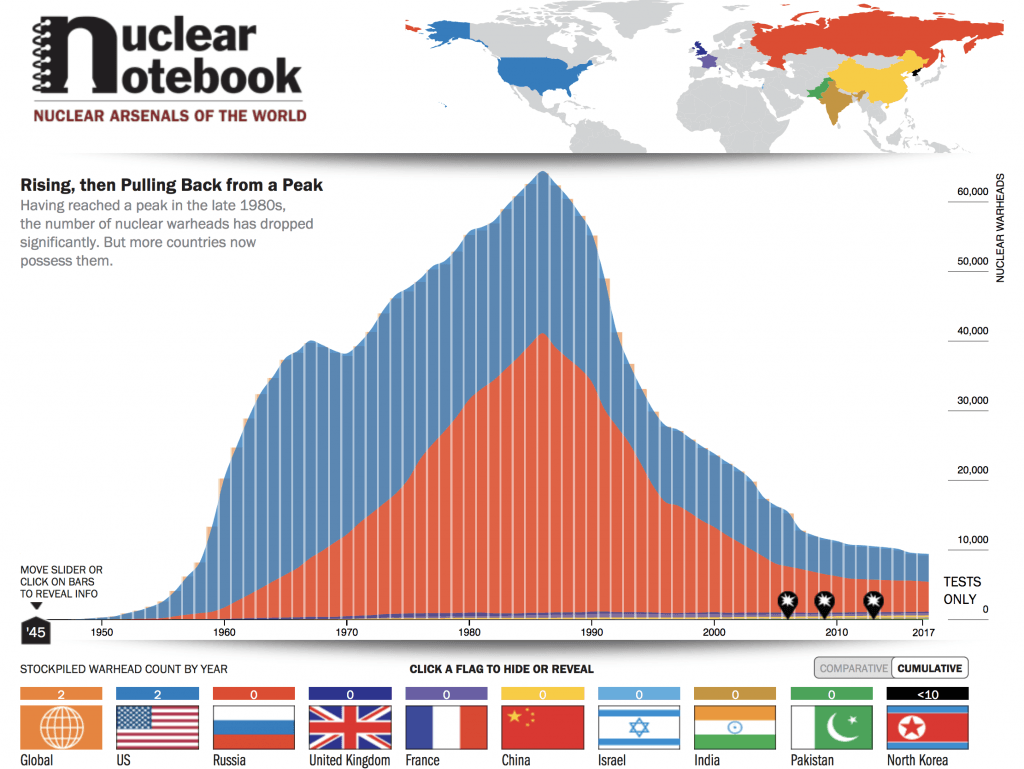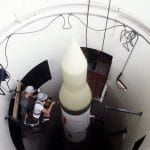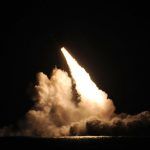Counting nuclear warheads in the public interest
By Robert S. Norris, Hans M. Kristensen | January 1, 2015

Nuclear Notebook: How many nuclear weapons exist in the world?
Longtime Nuclear Notebook readers know that we typically take an in-depth look at arsenals around the world to reveal, as much as possible, what kind of nuclear weapons are deployed, where they are, and in what numbers. In this issue of the Bulletin of the Atomic Scientists, we are going to do something different and take stock of what we’ve been able to accomplish in more than 180 columns over the past 28 years, and the role the Notebook has come to play in public debate.
The Notebook originated with researchers at the Natural Resources Defense Council (NRDC), who in the early 1980s saw a need for a publicly available resource that provided the basic facts about US nuclear weapons: how many there were, what they looked like, where they were deployed, and how and where they were made. This led to the Nuclear Weapons Databook series,1 a set of standard reference works still in use. After three volumes devoted to the United States, the NRDC produced a fourth volume about Soviet weapons in 1988 and a fifth volume about the British, French, and Chinese nuclear arsenals in 1994…
To read this full article for free, visit our online archive here.
To download a PDF of this article, click this link.
To read an authoritative accounting of world nuclear arsenals, click here for all Nuclear Notebook columns.
The Nuclear Notebook is researched and written by Hans M. Kristensen, director of the Nuclear Information Project with the Federation of American Scientists and Robert S. Norris, a senior fellow with the FAS. The Nuclear Notebook column has been published in the Bulletin of the Atomic Scientists since 1987. The Nuclear Notebook column has been published in the Bulletin of the Atomic Scientists since 1987.
Together, we make the world safer.
The Bulletin elevates expert voices above the noise. But as an independent nonprofit organization, our operations depend on the support of readers like you. Help us continue to deliver quality journalism that holds leaders accountable. Your support of our work at any level is important. In return, we promise our coverage will be understandable, influential, vigilant, solution-oriented, and fair-minded. Together we can make a difference.
Issue: Bulletin of the Atomic Scientists Volume 71 Issue 1
Keywords: Databook series, NRDC, Nuclear Notebook, SIPRI Yearbook, nuclear arsenals, nuclear weapons
Topics: Nuclear Notebook
















